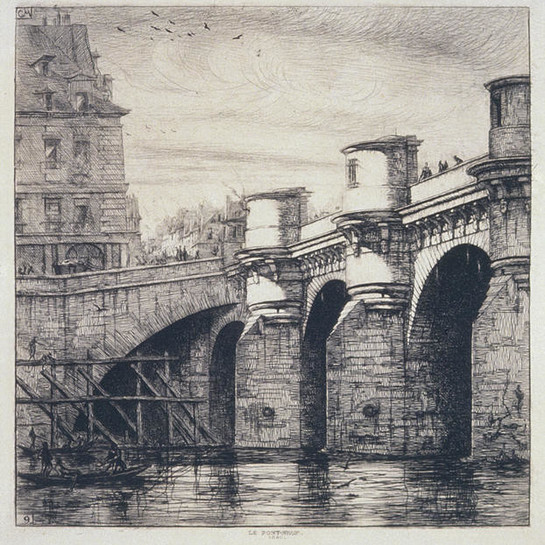Jean-François Millet
France, b.1814, d.1875
Le départ pour le travail [Leaving for Work]
- 1863
- Etching
- Purchased 1977
- 479 x 360mm
- 78/114
Tags: baskets (containers), crocks, hats, jars, monochrome, pairs, people (agents), tools, workers
Jean-François Millet’s signature depictions of peasant workers recognised a disappearing way of life that also echoed his own past: he was among the many rural labourers who left the French countryside. His artistic ability was first recognised in his teenage years while he was labouring on his parents’ freehold farm in Gruchy, a tiny hamlet on the Normandy coast. He was then apprenticed to a painter in nearby Cherbourg in 1833 and left for Paris four years later. This etching was based on paintings he made between 1848 and 1852.
(Leaving for work, 2 October 2021 - 1 May 2022)
Exhibition History
Following the 1848 French Revolution, the Barbizon school of painters to which Millet belonged had new attitudes towards realism in art and the romanticism of peasant life. The artists were interested in depicting the self-denial and resignation of the worker who, living harmoniously with nature, went steadily and serenely on with their hard and unremitting labours.
Along with his famous paintings on this theme, Millet also made 44 etchings. Among them is Departure for Work, which is his last large-scale etching, and possibly his most important print. The peasants are presented with rugged directness and because of the selected low viewpoint they tower grandly above the fields, their feet firmly planted on the ground. Grave and conscious of their mission, they are rather reminiscent of other images showing Adam and Eve being expelled from Paradise.
The woman has her basket over her head to shield her from the strong sunlight which Millet has suggested by the darkness of the shadows. These he made by a prolonged biting of the plate in the acid. Sometimes he left it in overnight to make these deep lines. The contrast is also very strong in the light and shade over the faces and against the more open and less defined forms in the background.
This plate, which was printed in 7 states, was commissioned by Alfred Sensier and printed first in 1863 and then again in 1867, when it is likely this impression was made.
(Label date unknown)



